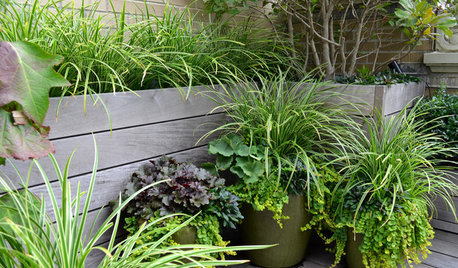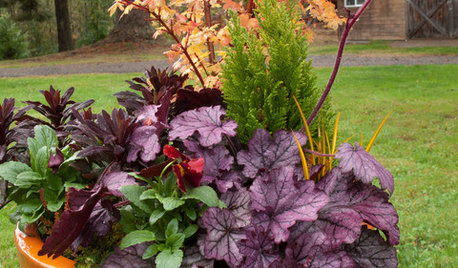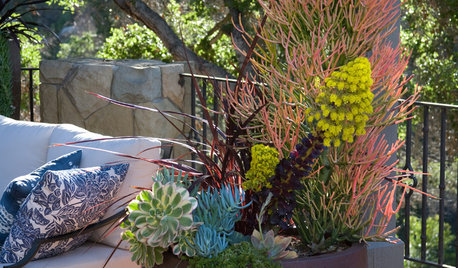Potatoes in Containers (the how of it all seems daunting)
susanlynne48
13 years ago
Related Stories

COOL-SEASON CROPSCool-Season Vegetables: How to Grow Potatoes
This ever-popular tuber is a stalwart in spring and fall gardens and a staple in kitchens everywhere
Full Story
COLORPick-a-Paint Help: How to Create a Whole-House Color Palette
Don't be daunted. With these strategies, building a cohesive palette for your entire home is less difficult than it seems
Full Story
PRODUCT PICKSGuest Picks: Loving Linen All Over the Home
Charmingly rumpled or ironed smooth, these linen finds from napkins to curtains bring casual elegance to rooms
Full Story
FARM YOUR YARDHow to Grow Vegetables in Containers
Get glorious vegetables and fruits on your patio with a pro’s guidance — including his personal recipe for potting mix
Full Story
PLANTING IDEASCreate High-Impact Container Gardens With Grasses
When it comes to adding drama, texture and panache to a pot, these strappy species are hard to beat
Full Story
FARM YOUR YARD10 Easy Edibles to Grow in Containers
These herbs, vegetables and fruits are just as happy in a pot as they are in the ground
Full Story
FALL AND THANKSGIVING5 Container Gardens for Fall, the Holidays and Beyond
Make planting easy with a single container, year-round plants and a sprinkling of simple seasonal accents
Full Story
FALL GARDENING12 Fabulous Fall Container Gardens
Celebrate the season with potted displays rich in color and texture
Full Story
PLANTING IDEASStretch the Budget, Seasons and Style: Add Conifers to Your Containers
Small, low-maintenance conifers are a boon for mixed containers — and you can transplant them to your garden when they’ve outgrown the pot
Full Story
CONTAINER GARDENSContainer Garden Basics: How and When to Water Potted Plants
Confused about soil moisture, the best time to water and what watering device to use? This guide can help
Full StorySponsored
Your Custom Bath Designers & Remodelers in Columbus I 10X Best Houzz
More Discussions






Okiedawn OK Zone 7
susanlynne48Original Author
Related Professionals
Norton Shores Landscape Architects & Landscape Designers · Concord Landscape Contractors · Berwyn Landscape Contractors · Biloxi Landscape Contractors · Davis Landscape Contractors · Estelle Landscape Contractors · Hendersonville Landscape Contractors · La Mirada Landscape Contractors · Nanuet Landscape Contractors · Oakland Landscape Contractors · Ocoee Landscape Contractors · Severna Park Landscape Contractors · Alexandria Decks, Patios & Outdoor Enclosures · Aventura Decks, Patios & Outdoor Enclosures · Framingham Decks, Patios & Outdoor Enclosuresiriekc
Okiedawn OK Zone 7
susanlynne48Original Author
newhippie
susanlynne48Original Author
jolj
Tractorlady63
soonergrandmom